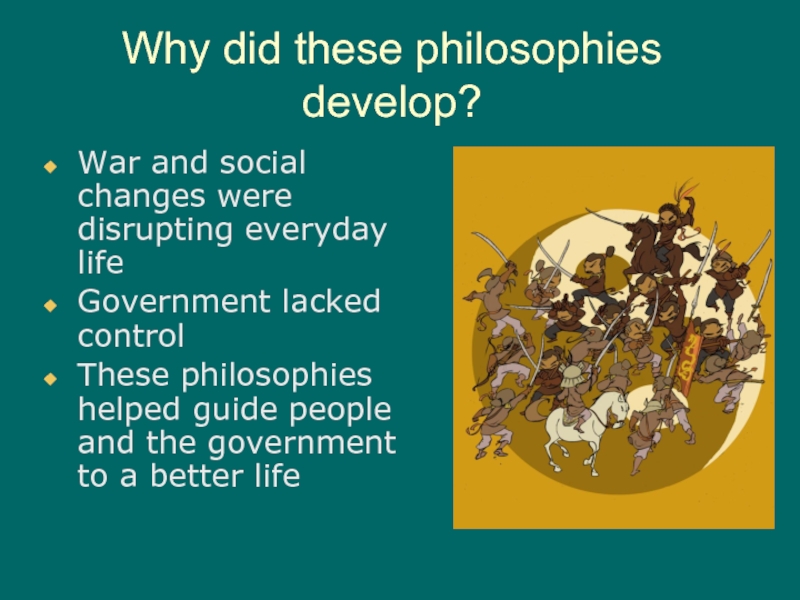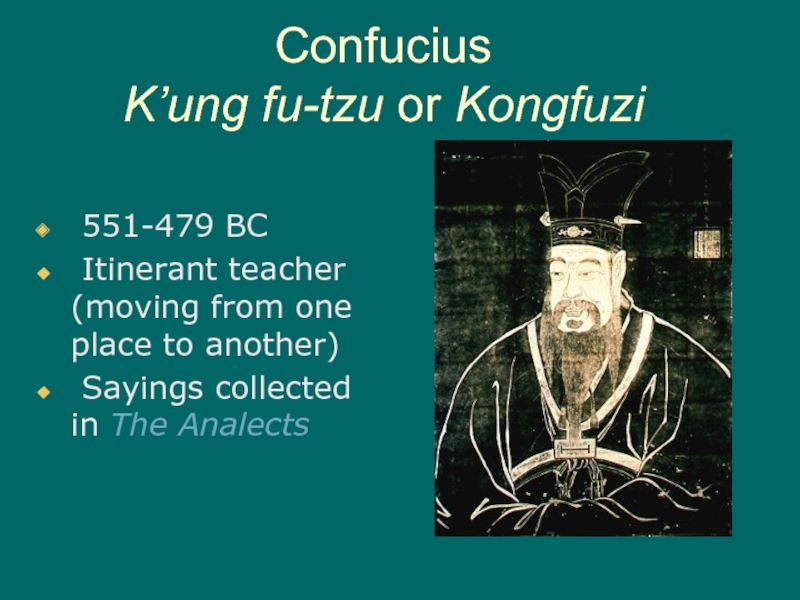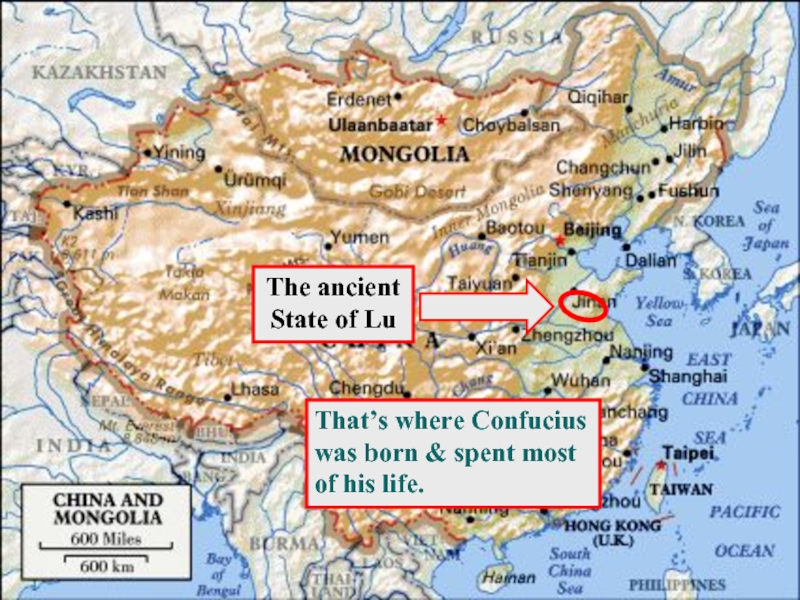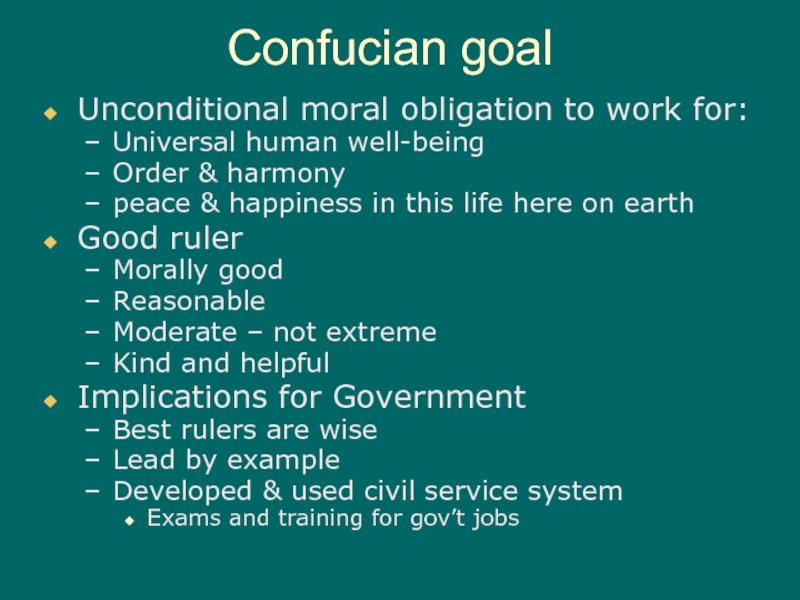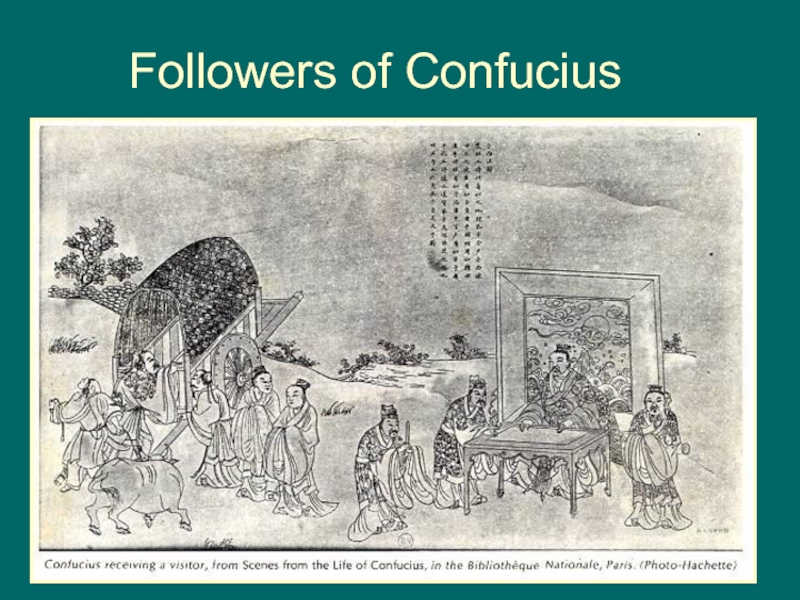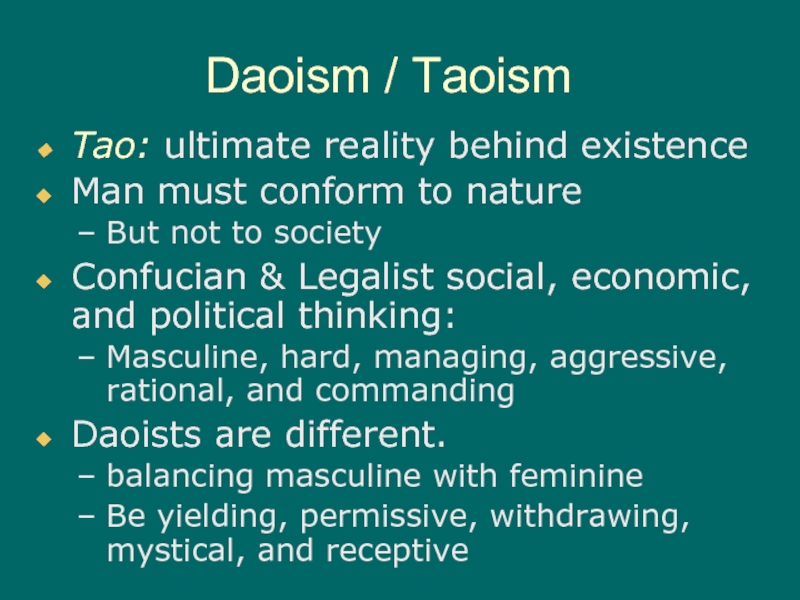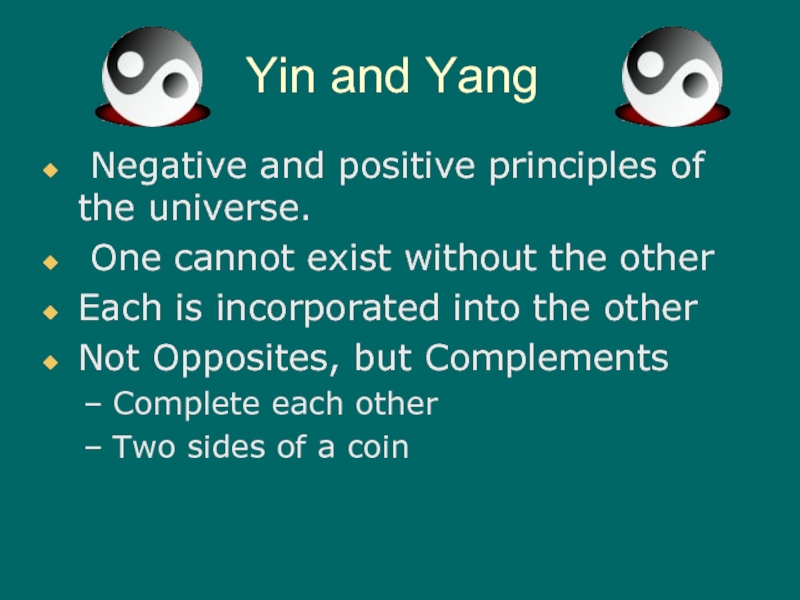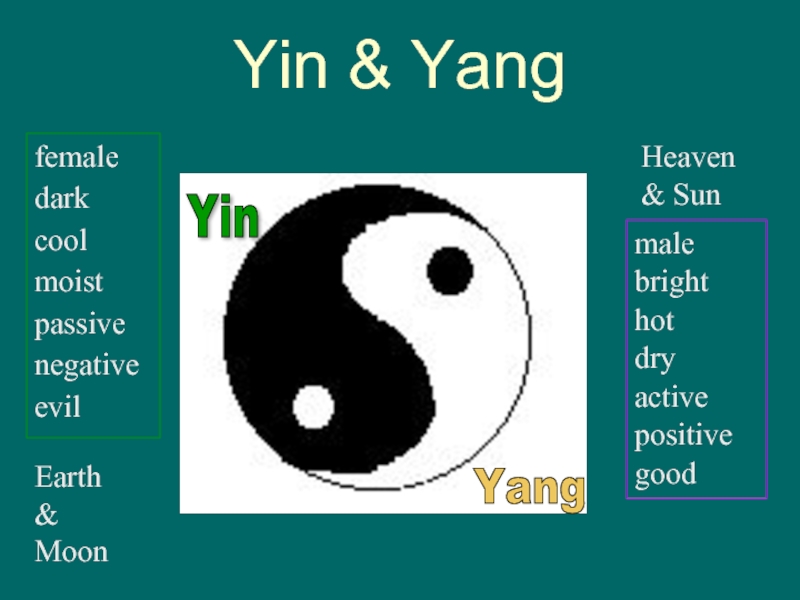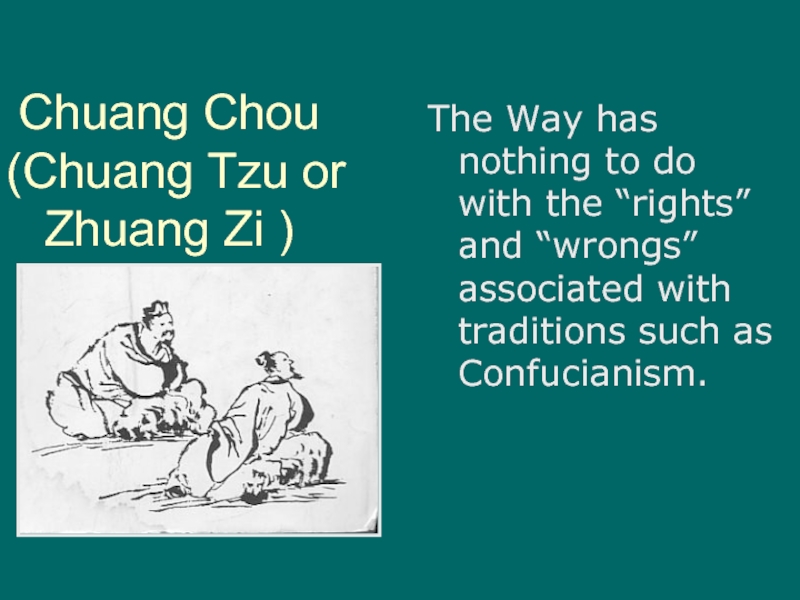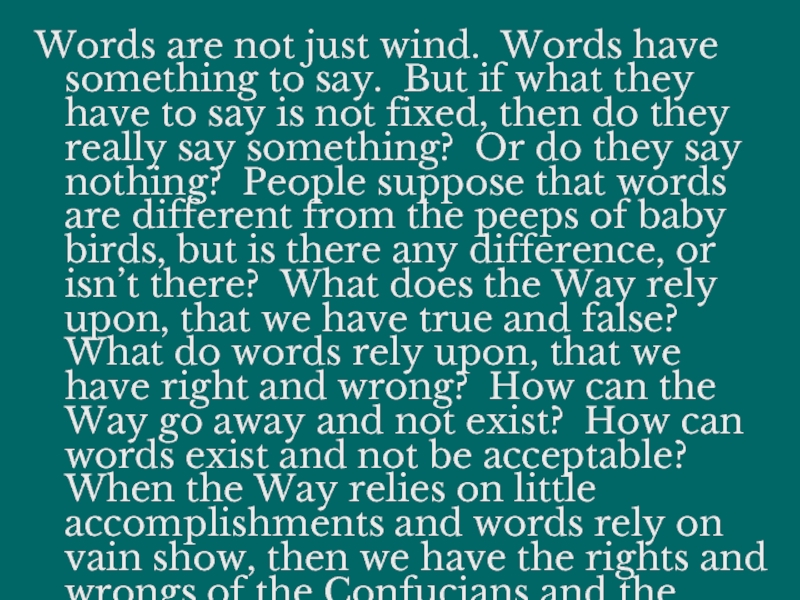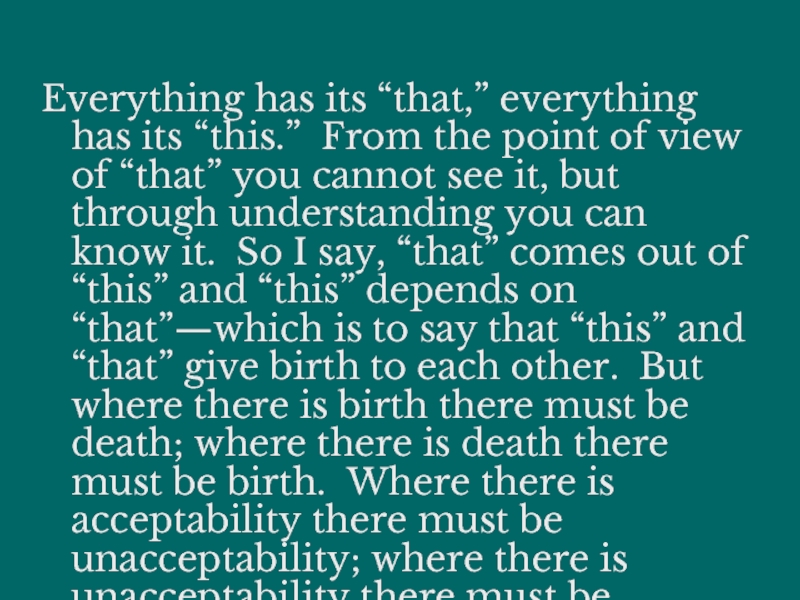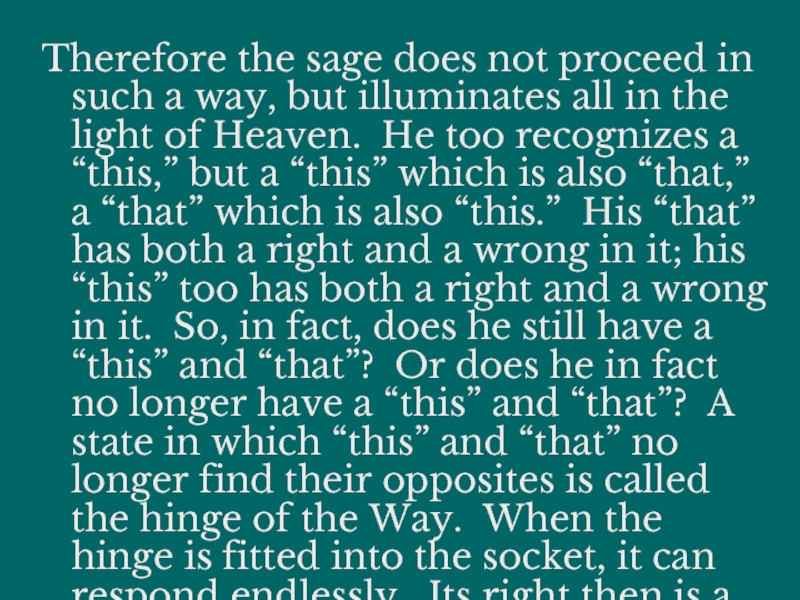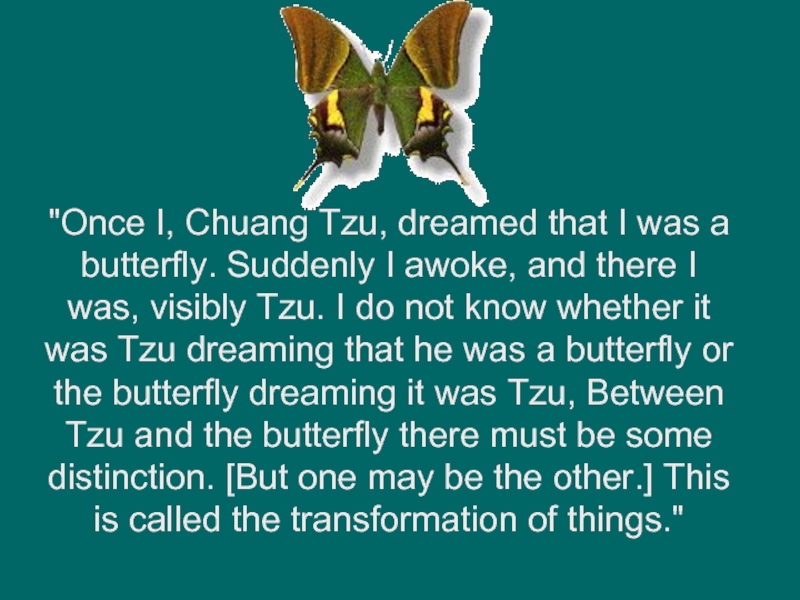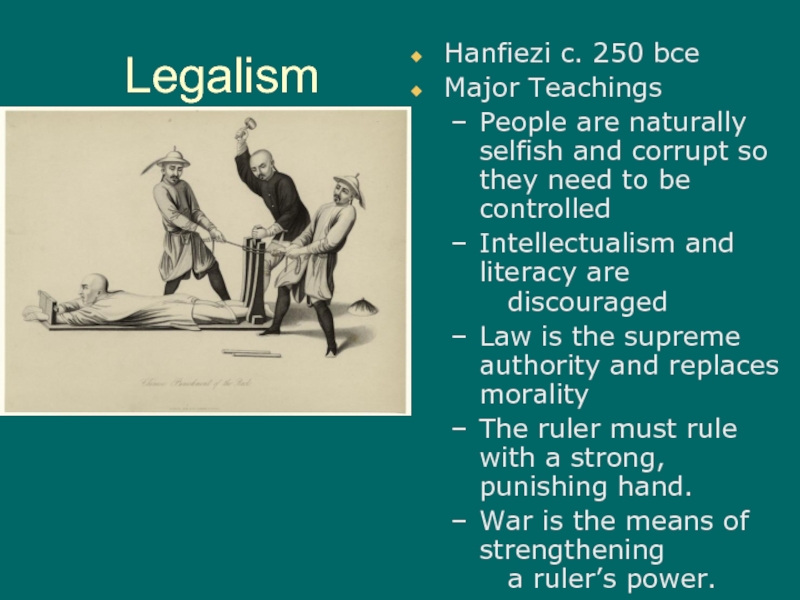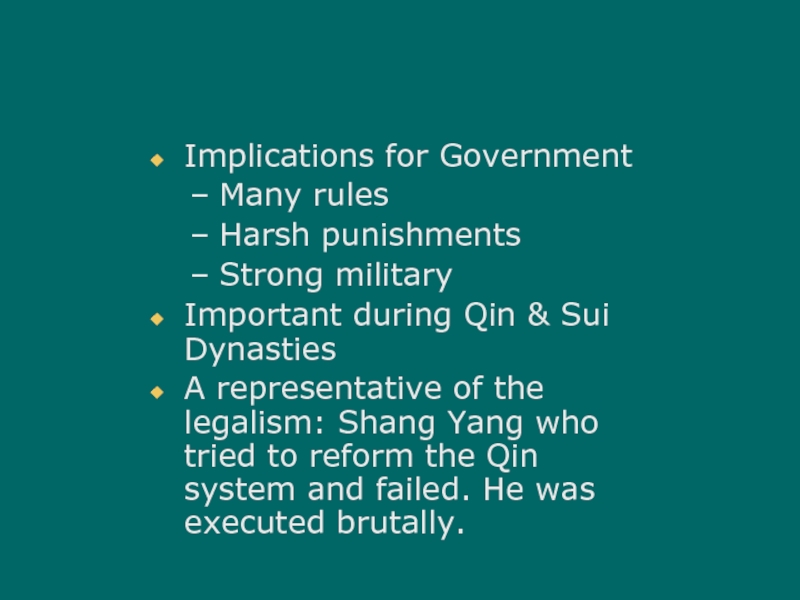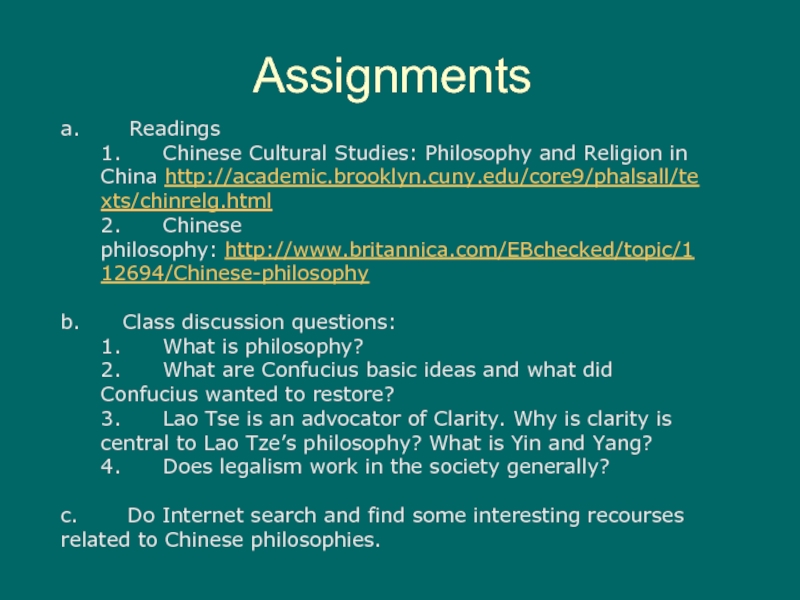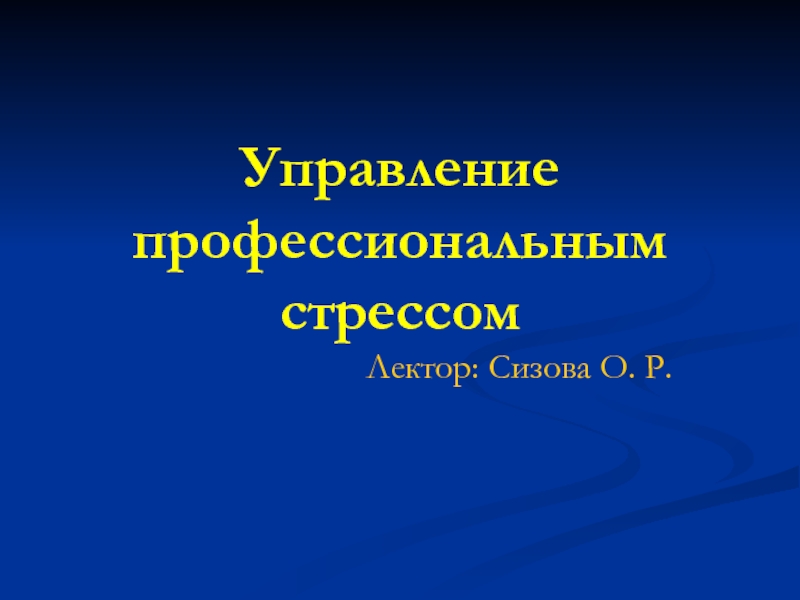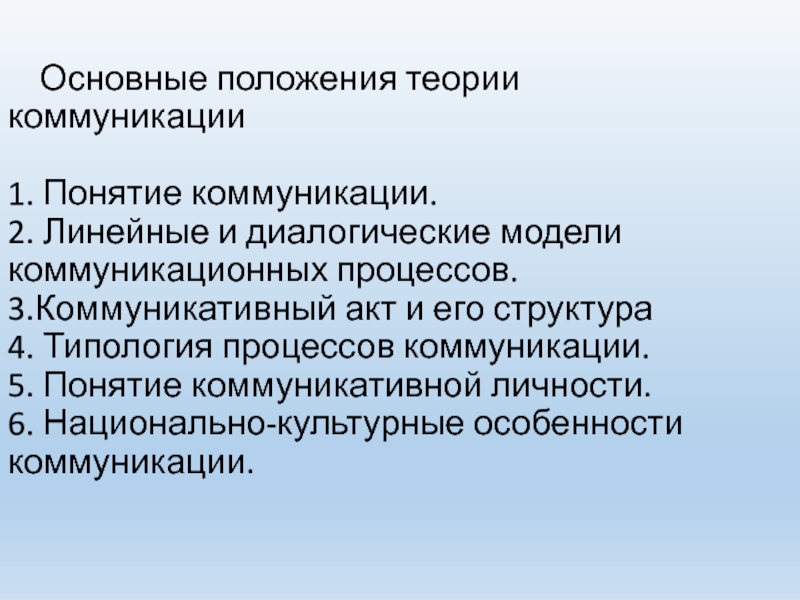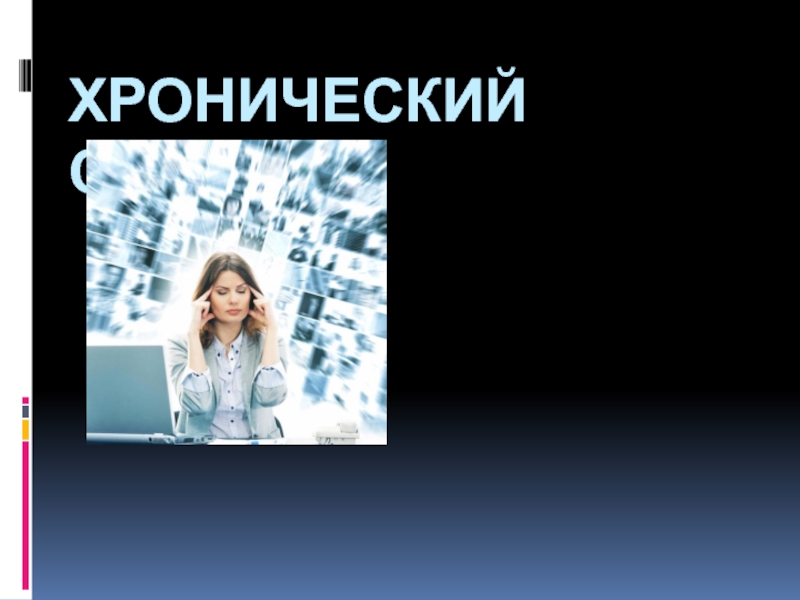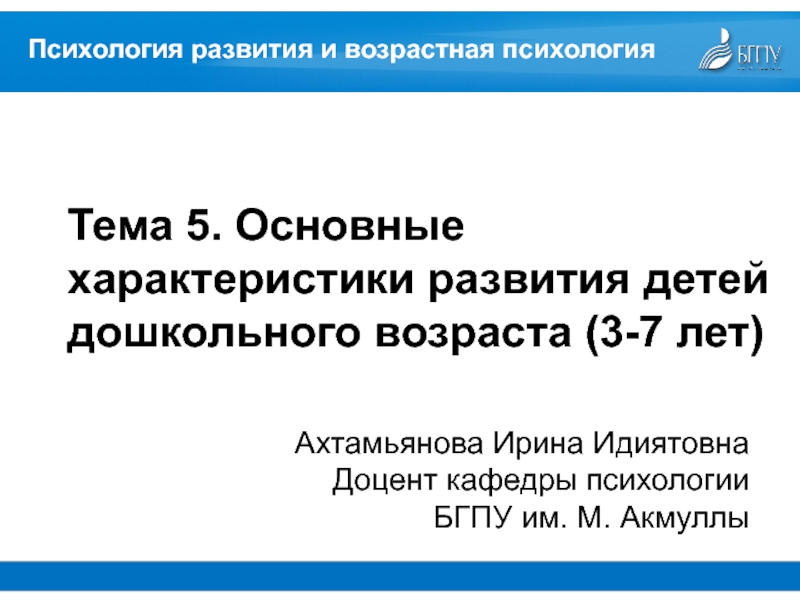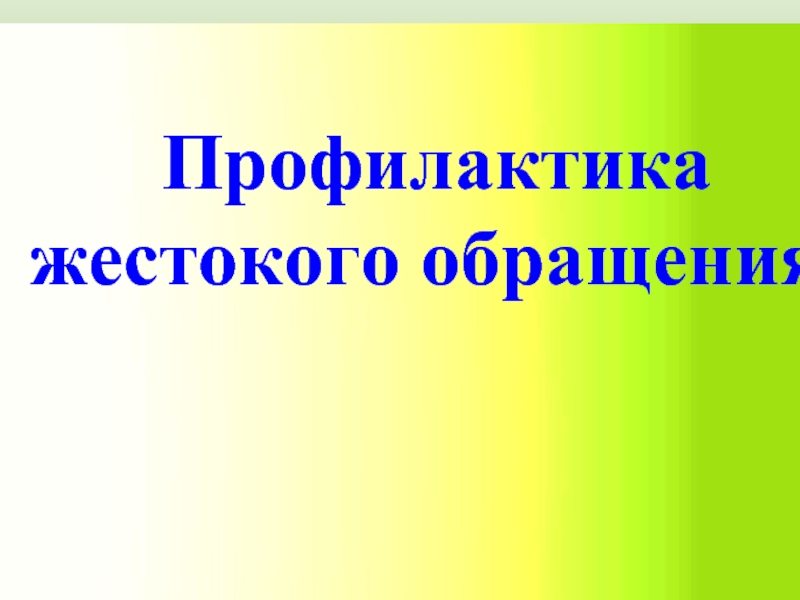- Главная
- Разное
- Дизайн
- Бизнес и предпринимательство
- Аналитика
- Образование
- Развлечения
- Красота и здоровье
- Финансы
- Государство
- Путешествия
- Спорт
- Недвижимость
- Армия
- Графика
- Культурология
- Еда и кулинария
- Лингвистика
- Английский язык
- Астрономия
- Алгебра
- Биология
- География
- Детские презентации
- Информатика
- История
- Литература
- Маркетинг
- Математика
- Медицина
- Менеджмент
- Музыка
- МХК
- Немецкий язык
- ОБЖ
- Обществознание
- Окружающий мир
- Педагогика
- Русский язык
- Технология
- Физика
- Философия
- Химия
- Шаблоны, картинки для презентаций
- Экология
- Экономика
- Юриспруденция
Chinese Ancient Philosophies презентация
Содержание
- 1. Chinese Ancient Philosophies
- 2. What is philosophy? Literally: a love for
- 3. Why did these philosophies develop? War and
- 4. Confucianism Founder: Confucius Analects 论语 – collection
- 5. Confucius K’ung fu-tzu or Kongfuzi
- 6. The ancient State of
- 7. Confucian goal Unconditional moral obligation to work
- 8. Followers of Confucius
- 9. Confucian Values Li: Politeness 4 basic
- 10. Daoism / Taoism Founder – Laozi (Lao-Tze)
- 11. Daoism / Taoism Tao: ultimate reality behind
- 12. Yin and Yang
- 13. Yin & Yang Yin Yang
- 14. Chuang Chou (Chuang Tzu or Zhuang
- 15. Words are not just wind. Words
- 16. Everything has its “that,” everything has
- 17. Therefore the sage does not proceed
- 18. "Once I, Chuang Tzu, dreamed that
- 19. Legalism Hanfiezi c. 250 bce Major Teachings
- 20. Implications for Government Many rules
- 21. Confucianism --> Moral order in society.
- 22. Assignments a. Readings 1. Chinese Cultural Studies: Philosophy and Religion
Слайд 2What is philosophy?
Literally: a love for wisdom
Typically asks Questions like:
What is
the purpose of life?
What is a good person like?
What is success?
What is truth? What is knowledge?
How should I act in a situation?
Opinions and views about the universe
Often philosophy and religion overlap
What is a good person like?
What is success?
What is truth? What is knowledge?
How should I act in a situation?
Opinions and views about the universe
Often philosophy and religion overlap
Слайд 3Why did these philosophies develop?
War and social changes were disrupting everyday
life
Government lacked control
These philosophies helped guide people and the government to a better life
Government lacked control
These philosophies helped guide people and the government to a better life
Слайд 4Confucianism
Founder: Confucius
Analects 论语 – collection of Confucius’ sayings
Major Teachings:
3 Levels
Status/Position
Age
Gender
5 Relationships
to Develop
Ruler to Subject (Loyalty)
Parent to Child (Filial Piety)
Husband to Wife
Older Brother to Younger Brother
Friend to Friend (Golden Rule, brotherhood)
Importance of Education
Importance of Morals and Values
Ruler to Subject (Loyalty)
Parent to Child (Filial Piety)
Husband to Wife
Older Brother to Younger Brother
Friend to Friend (Golden Rule, brotherhood)
Importance of Education
Importance of Morals and Values
Слайд 5
Confucius
K’ung fu-tzu or Kongfuzi
551-479 BC
Itinerant teacher (moving from one
place to another)
Sayings collected in The Analects
Sayings collected in The Analects
Слайд 7Confucian goal
Unconditional moral obligation to work for:
Universal human well-being
Order &
harmony
peace & happiness in this life here on earth
Good ruler
Morally good
Reasonable
Moderate – not extreme
Kind and helpful
Implications for Government
Best rulers are wise
Lead by example
Developed & used civil service system
Exams and training for gov’t jobs
peace & happiness in this life here on earth
Good ruler
Morally good
Reasonable
Moderate – not extreme
Kind and helpful
Implications for Government
Best rulers are wise
Lead by example
Developed & used civil service system
Exams and training for gov’t jobs
Слайд 9Confucian Values
Li: Politeness
4 basic rules of human conduct:
Courtesy
Politeness
Good manners
Respect
Ren
(Ren): Respect
Golden Rule:
Do not do to others what you do not want done to you.”
De: Moral action
Strong leaders guide by example
Wen: Arts of peace:
Music, poetry, art
harmony, order, excellence, beauty.
Golden Rule:
Do not do to others what you do not want done to you.”
De: Moral action
Strong leaders guide by example
Wen: Arts of peace:
Music, poetry, art
harmony, order, excellence, beauty.
Слайд 10Daoism / Taoism
Founder – Laozi (Lao-Tze)
Sacred Text –Tao-te-Ching (Dao De
Jing) 道德经
Lao-Tze - The Book of the Way
Major Teachings
Live in harmony with nature
Be like water:
Water goes with the ‘flow’
but is unstoppable
Implications for Government
Government unnatural
Tries to change too much
Usually makes things worse
Lao-Tze - The Book of the Way
Major Teachings
Live in harmony with nature
Be like water:
Water goes with the ‘flow’
but is unstoppable
Implications for Government
Government unnatural
Tries to change too much
Usually makes things worse
Слайд 11Daoism / Taoism
Tao: ultimate reality behind existence
Man must conform to nature
But
not to society
Confucian & Legalist social, economic, and political thinking:
Masculine, hard, managing, aggressive, rational, and commanding
Daoists are different.
balancing masculine with feminine
Be yielding, permissive, withdrawing, mystical, and receptive
Confucian & Legalist social, economic, and political thinking:
Masculine, hard, managing, aggressive, rational, and commanding
Daoists are different.
balancing masculine with feminine
Be yielding, permissive, withdrawing, mystical, and receptive
Слайд 12
Yin and Yang
Negative and positive principles of the universe.
One cannot exist without the other
Each is incorporated into the other
Not Opposites, but Complements
Complete each other
Two sides of a coin
Слайд 13Yin & Yang
Yin
Yang
female
dark
cool
moist
passive
negative
evil
male
bright
hot
dry
active
positive
good
Earth & Moon
Heaven & Sun
Слайд 14Chuang Chou
(Chuang Tzu or Zhuang Zi )
The Way has
nothing to do with the “rights” and “wrongs” associated with traditions such as Confucianism.
Слайд 15
Words are not just wind. Words have something to say. But
if what they have to say is not fixed, then do they really say something? Or do they say nothing? People suppose that words are different from the peeps of baby birds, but is there any difference, or isn’t there? What does the Way rely upon, that we have true and false? What do words rely upon, that we have right and wrong? How can the Way go away and not exist? How can words exist and not be acceptable? When the Way relies on little accomplishments and words rely on vain show, then we have the rights and wrongs of the Confucians and the Mo-ists. What one calls right the other calls wrong; what one calls wrong the other calls right. But if we want to right their wrongs and wrong their rights, then the best thing to use is clarity.
Слайд 16
Everything has its “that,” everything has its “this.” From the point
of view of “that” you cannot see it, but through understanding you can know it. So I say, “that” comes out of “this” and “this” depends on “that”—which is to say that “this” and “that” give birth to each other. But where there is birth there must be death; where there is death there must be birth. Where there is acceptability there must be unacceptability; where there is unacceptability there must be acceptability. Where there is recognition of right there must be recognition of wrong; where there is recognition of wrong there must be recognition of right.
Слайд 17
Therefore the sage does not proceed in such a way, but
illuminates all in the light of Heaven. He too recognizes a “this,” but a “this” which is also “that,” a “that” which is also “this.” His “that” has both a right and a wrong in it; his “this” too has both a right and a wrong in it. So, in fact, does he still have a “this” and “that”? Or does he in fact no longer have a “this” and “that”? A state in which “this” and “that” no longer find their opposites is called the hinge of the Way. When the hinge is fitted into the socket, it can respond endlessly. Its right then is a single endlessness and its wrong too is a single endlessness. So, I say, the best thing to use is clarity. [Chuang Tzu, 34-35]
Слайд 18
"Once I, Chuang Tzu, dreamed that I was a butterfly. Suddenly
I awoke, and there I was, visibly Tzu. I do not know whether it was Tzu dreaming that he was a butterfly or the butterfly dreaming it was Tzu, Between Tzu and the butterfly there must be some distinction. [But one may be the other.] This is called the transformation of things."
Слайд 19Legalism
Hanfiezi c. 250 bce
Major Teachings
People are naturally selfish and corrupt
so they need to be controlled
Intellectualism and literacy are discouraged
Law is the supreme authority and replaces morality
The ruler must rule with a strong, punishing hand.
War is the means of strengthening a ruler’s power.
Intellectualism and literacy are discouraged
Law is the supreme authority and replaces morality
The ruler must rule with a strong, punishing hand.
War is the means of strengthening a ruler’s power.
Слайд 20
Implications for Government
Many rules
Harsh punishments
Strong military
Important during Qin &
Sui Dynasties
A representative of the legalism: Shang Yang who tried to reform the Qin system and failed. He was executed brutally.
A representative of the legalism: Shang Yang who tried to reform the Qin system and failed. He was executed brutally.
Слайд 21 Confucianism --> Moral order in society.
Legalism --> Rule by
harsh law & order.
Daoism --> Freedom for individuals and less govt. to avoid uniformity and conformity.
Summary of the 3 Chinese Philosophies
Слайд 22Assignments
a. Readings
1. Chinese Cultural Studies: Philosophy and Religion in China http://academic.brooklyn.cuny.edu/core9/phalsall/texts/chinrelg.html
2. Chinese philosophy: http://www.britannica.com/EBchecked/topic/112694/Chinese-philosophy
b. Class discussion questions:
1. What is
philosophy?
2. What are Confucius basic ideas and what did Confucius wanted to restore?
3. Lao Tse is an advocator of Clarity. Why is clarity is central to Lao Tze’s philosophy? What is Yin and Yang?
4. Does legalism work in the society generally?
c. Do Internet search and find some interesting recourses related to Chinese philosophies.
2. What are Confucius basic ideas and what did Confucius wanted to restore?
3. Lao Tse is an advocator of Clarity. Why is clarity is central to Lao Tze’s philosophy? What is Yin and Yang?
4. Does legalism work in the society generally?
c. Do Internet search and find some interesting recourses related to Chinese philosophies.


